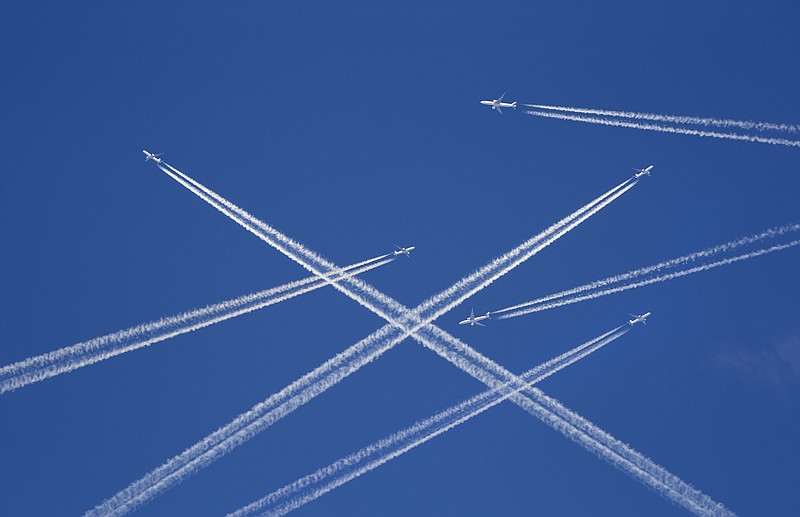Since I was a little boy, I wanted to fly jets, especially fighter jets. I was blessed to realize that dream during most of my 20 years as an Air Force officer.
Fighter squadrons are tough places to work. The competition is intense, and the environment is unforgiving. A few seconds of indecision or inattention can be fatal. The greatest routine challenge for fighter pilots is the one-vs.-one Basic Fighter Maneuver (BFM) air-to-air training mission. It is where all the training, experience and natural ability of a pilot is pitted against another pilot in an equally performing aircraft. In World War I, fledgling fighter pilots began calling similar combat engagements "dogfights."
The F-16, the last fighter I flew, is an incredible dogfight platform. During turns, it sustains up to 9.5 G's. If your hand normally weighs five pounds, at 9.5 G's, it weighs almost 50 pounds. The engine generates more than 30,000 pounds of thrust, more than the airplane weighs, so it maintains its energy in a dogfight better than almost any other aircraft. It integrates a 20-millimeter cannon that fires 100 rounds per second, heat-seeking and radar guided air-to-air missiles, and lots of air-to-ground weapons. It was a thrill every single time I flew it.
I've reflected a great deal lately on one F-16 BFM mission I had in the summer of 1992, just before I transferred from my squadron in northern Japan. I was a major and had flown F-4 and F-16 fighters more than 14 years, accumulating nearly 3,000 hours. That day I had a young lieutenant on my wing, Warren Rogers, who was in his first operational assignment after flight training. He was intelligent, handsome, quiet and athletic. As the flight leader, I briefed the mission, then we suited up, headed to our jets and took off.
Once in the training area I directed Lt. Rogers to fly a mile abreast of my aircraft, then gave the "Fight's on!" call over the radio. We both began hard turns into each other, straining to get the maximum performance from ourselves and our aircraft. The goal was to get to the other pilot's six o'clock (rear) in a position to potentially employ weapons. In training, real weapons aren't fired. Instead, our performance was evaluated through our heads-up camera film when we debriefed after the mission. We repeated the set-up three times.
With my experience, I should have easily won each engagement, but it didn't turn out that way. Lt. Rogers flew superbly. He capitalized on my mistakes and made almost none himself. He outflew me. I wasn't humiliated. I was beaten by the better pilot, and I respected him for it. I praised him during the debriefing, as it was obvious that he had worked hard, was disciplined and understood the complex missions we flew. He epitomized what we expected of our young pilots.
So, why would I think a lot about that sortie out of the thousands that I flew in my military and commercial careers? Lt. Rogers was the only black pilot in my squadron. I could have cared less about his skin color; yet, suddenly this summer, I'm supposed to be "woke" from the sins of my racist past. He beat me that day because he was better. Our skin color had nothing to do with anything. He earned my respect; he didn't demand it.
Lt. Rogers carried himself with dignity. He let his actions speak for him. His character was the antithesis of the arrogant, small-minded, barbaric decadence that defines the stooge puppets performing for the Marxists and socialists behind the Black Lives Matter and Antifa movements this summer.
Thankfully, there are a lot more Warren Rogers types out there than the protesting thugs, both white and black, would have us believe.
Roger Smith, a local author, is a frequent contributor to the Times Free Press.
